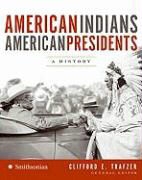Read more
Informationen zum Autor The Smithsonian Institution's National Museum of the American Indian is dedicated to working in collaboration with the indigenous peoples of the Americas to foster and protect Native cultures throughout the Western Hemisphere. The museum's publishing program seeks to augment awareness of Native American beliefs and ways of life and to educate the public about the history and significance of Native cultures. Cécile R. Ganteaume, associate curator, joined the National Museum of the American Indian when it was established as part of the Smithsonian. Previously she was on the curatorial staff of the museum's forerunner institution, the Museum of the American Indian-Heye Foundation, in New York. Her essays have appeared in many publications, including Native American Dance: Ceremonies and Social Traditions , Creation's Journey: Native American Identity and Belief , and American Indian Art Magazine . Her research interests center on American Indian material culture, tribal histories, and Apache cultural studies. General editor Clifford E. Trafzer (of Wyandot ancestry) is the Rupert Costo Chair of American Indian Affairs and a professor of history at the University of California, Riverside. Klappentext When the American colonies defeated Britain during the War for Independence! Native American leaders began to establish diplomatic relations with the new nation. Here! for the first time! is the little-known history of American Indians and American presidents! what they said and felt about one another! and what their words tell us about the history of the United States. Focused on major turning points in Native American history! these pages show how American Indians interpreted the power and prestige of the presidency! and advanced their own agenda for tribal sovereignty! from the age of George Washington to the present day. In addition to exploring a pantheon of Indian leaders! from Little Turtle to Robert Yellowtail! this book also provides new--and often unexpected--perspectives on the presidents. Thomas Jefferson! traditionally portrayed as the Indians' friend! emerges as a master of the art of Indian dispossession. Richard Nixon! long-tarnished by the Watergate scandal! was in reality a champion of tribal self-determination--a position that sprang! in part! from his Quaker origins. Using inaugural addresses! proclamations! Indian Agency records! private correspondence! memoirs! petitions! photographs! and objects from the collections of the Smithsonian's National Museum of the American Indian! "American Indians/American Presidents" illuminates the relationship between these diverse leaders! the Native Americans' commitment to tribal self-determination! and the social! geographic! and political evolution of the United States over more than two centuries. Zusammenfassung When the American colonies defeated Britain during the War for Independence! Native American leaders began to establish diplomatic relations with the new nation. Here! for the first time! is the little-known history of American Indians and American presidents! what they said and felt about one another! and what their words tell us about the history of the United States. Focused on major turning points in Native American history! these pages show how American Indians interpreted the power and prestige of the presidency! and advanced their own agenda for tribal sovereignty! from the age of George Washington to the present day. In addition to exploring a pantheon of Indian leaders! from Little Turtle to Robert Yellowtail! this book also provides new—and often unexpected—perspectives on the presidents. Thomas Jefferson! traditionally portrayed as the Indians' friend! emerges as a master of the art of Indian dispossession. Richard Nixon! long-tarnished by the Watergate scandal! was in reality a champion of tribal self-dete...

